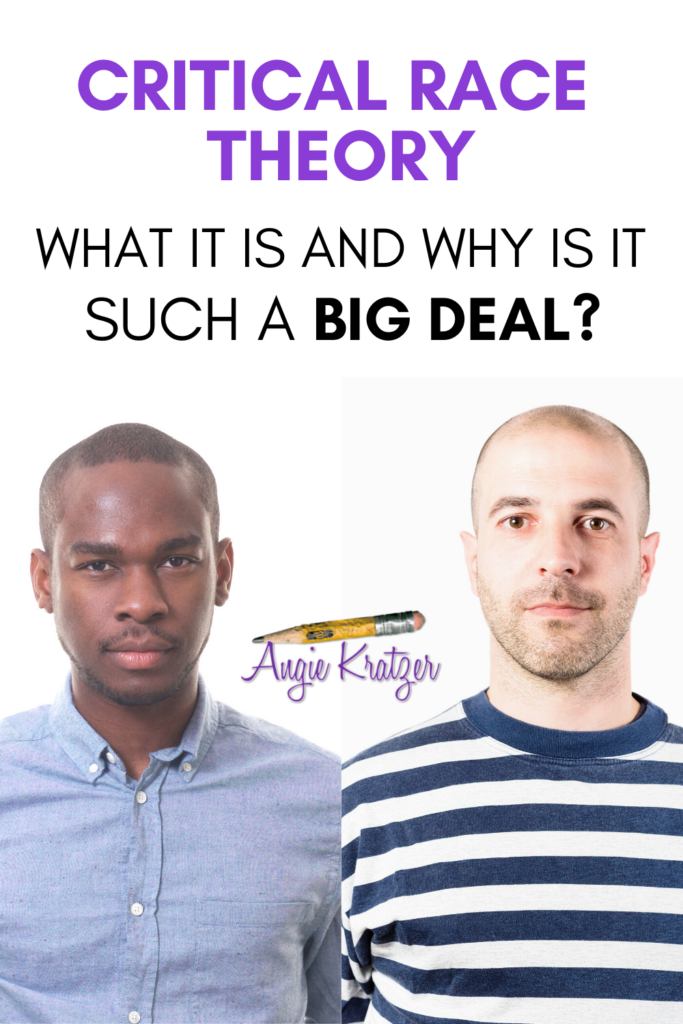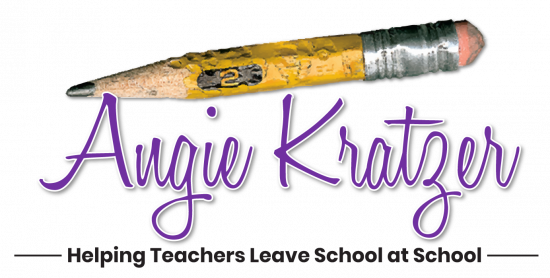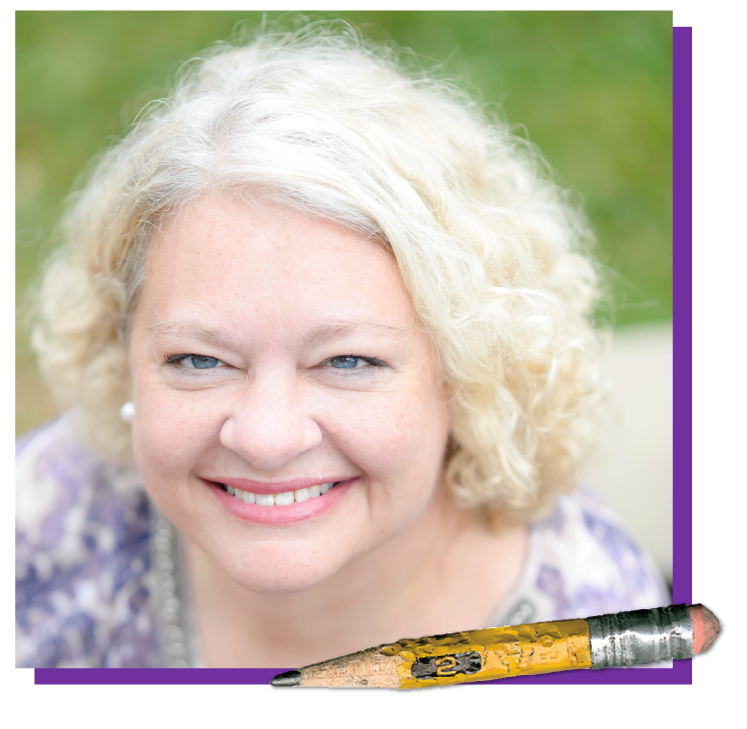There are a LOT of angry parents, school board members, and politicians coming forward about what they are calling critical race theory. I get the anger–I really do–because many people think there is an attempt to indoctrinate our children to believe that White people are bad. I’m the helicopter parent of a fourth grader, and I’ve darkened the door of a classroom or two when I thought something was amiss. My first step? Find out what’s really happening.
That’s the step that’s missing with the current public outcry about critical race theory.
Well-meaning parents and politicians are getting wound up with some misinformation, and that misinformation is not accidental; it is intentional. CRITICAL RACE THEORY IS NOT WHAT PEOPLE ARE BEING LED TO BELIEVE. There is an agenda behind this redefining of CRT, and we need to take a look at it.
Ignorant Outrage
A few months ago, my own newly-elected lieutenant governor put into place a task force to stop the “political indoctrination” of students in public schools. He created a pathway for parents and students to report teachers who are subjecting students “to indoctrination according to a political agenda or ideology, whether through assigned work, teacher comments, or a hostile classroom environment.” This idea sounds politically neutral, but it’s not; Robinson has come out hard against CRT, saying, “This kind of thinking does not help us move forward from the days of Jim Crow, in fact, it is leading us back to them.” This task force may or may not yield much power, but the bill making its way through our state legislature could.
So could those making their way through the legislatures of 21 other states.
Texas just passed a law limiting how K-12 teachers can discuss current events and America’s history of racism.
Oklahoma, Idaho, and Arkansas have banned the teaching of critical race theory in public COLLEGE classrooms.
Terrified yet? If you’re a high school social studies or English teacher, your heart is pounding, your palms are a little bit sweaty, and you’re concerned that there is a push to keep you from teaching students about America’s racist past. These facts might help us push back.

First, a Little History
How Critical Race Theory Got Started
Shortest history lesson ever: America experienced the Civil Rights Movement of the 1950s and 1960s and finally saw the passage of the Civil Rights Act and Voting Rights Act. Yay, progress! Institutions, agencies, and businesses began putting into place policies and practices to ensure equity and equality for Black Americans. Think things like affirmative action and desegregation of schools.
Some White people cried foul . . . and discrimination . . . and how-dare-you-send-my-baby-across-town-on-a-bus. Courts got involved. The Movement slowed down, and in some ways, went backwards.
A different approach was needed. A bunch of law professors (Richard Bell, Richard Delgado, Patricia Williams, Kimberle Crenshaw, Mari Matsuda, Charles Lawrence, and others) started to look at racial discrimination in the legal system. Instead of dealing with the prejudices and biases of individuals, they began to look at racism from a systemic perspective. And they did that looking from multiple angles.
They looked at economics, narratives, class, literary theory, history, and even the unconscious. They asked these two questions:
WHAT ARE THE MECHANICS OF RACIAL INEQUALITY?
HOW MIGHT THE LAW BE IMAGINED TO ADDRESS THEM?
So critical race theory started out as a field of study among law professors. Guess what? It’s still there. Critical race theory is a niche field of study. It’s broader now, but it’s still a graduate-level academic field. Law schools teach it, and some graduate-level education programs cover it, but CRT is NOT something that would be addressed in a K-12 curriculum.
A Better Definition of Critical Race Theory
I wish everyone agreed on how to define CRT–even within the academic community–but I was able to find a few definitions that contain a common thread.
Ed Week: The core idea is that racism is a social construct, and that it is not merely the product of individual bias or prejudice, but also something embedded in legal systems and policies.
Mother Jones: A scholarly framework that seeks to understand the role race and racism have played in all aspects of society
Kendall Thomas (Columbia Law School): Critical race theory is an effort really to move beyond the focus on finding fault by impugning racist motives, racist bias, racist prejudice, racist animus and hatred to individuals, and looking at the ways in which racial inequality is embedded in structures in ways of which we are very often unaware.
Dr. Ibram X. Kendi (Boston University): A theory in an intellectual tradition that seeks to attack structural racism
So you see why school boards across the country are FREAKING OUT, right?! A small group of people in some law schools are looking at systemic racism and trying to figure out how to untangle the knot! Wait. Does that really explain the outrage? Why do school boards care about critical race theory?
They are being told to care about critical race theory. Fox News has mentioned it over 1300 times this year, and that’s just one outlet. Unfortunately, the “it” these outlets are mentioning is being defined incorrectly.
A Political Agenda
Enter Christopher Rufo, a documentary filmmaker, who went on Fox News in the summer of 2020 and claimed that CRT was being “weaponized against the American people” in a “cult indoctrination.”
Donald Trump saw the interview.
President Trump immediately banned the teaching of critical race theory and the term “white privilege” in federal diversity training. He soon after expanded that to any contractors working for the federal government and called it “divisive, anti-American propaganda.”
Panic set in. That was September of 2020. Since then, the term “critical race theory” has become synonymous with all the things–white privilege, diversity training, you name it. And it’s no accident.
Intentional Misinformation About CRT
Christopher Rufo has become a pretty popular guy. He’s a consultant now and has advised hundreds of politicians and school boards on ways to weed out what he is calling “critical race theory.”
The crazy thing is that he admits to lying about it. He tweeted, “We have successfully frozen their brand—’critical race theory’—into the public conversation and are steadily driving up negative perceptions. We will eventually turn it toxic, as we put all of the various cultural insanities under that brand category. The goal is to have the public read something crazy in the newspaper and immediately think ‘critical race theory.’ We have decodified the term and will recodify it to annex the entire range of cultural constructions that are unpopular with Americans.”
Whoa. Did he post that by accident? Did he mean to show his hand? Yes, he did. When asked about it, he doubled down: “I basically took that body of criticism, I paired it with breaking news stories that were shocking and explicit and horrifying, and made it political, turned it into a salient political issue with a clear villain.”
Perfect Timing
Is it just me, or does the timing seem to be lined up with the BLM protests and America’s awakening to possible systemic racism within our criminal justice system? George Floyd is killed. Americans protest. We begin to see a thought shift. White conservatives in power positions see a potential loss of power and position. Suddenly, we have a villain, and her name is critical race theory. Under the guise of unifying Blacks and Whites, conservative critics go after her and call her divisive.
Four Criticisms
Let’s be clear: The criticisms of CRT are not actually criticisms of CRT because the people using the term mean something else. Keep that in mind.
Criticism #1: Critical race theory is a divider, not a uniter.
The premise here is that we cannot be united if we look critically at systemic racism and the history of racism in America.
Criticism #2: We need to leave the past in the past so we can heal.
The premise here is that we do not currently have a problem with systemic racism. Let’s get into that.
Fact: The median Black household has less than 11% of the wealth of the median White household. This could be the result of a systemic problem within the banking and real estate industries.
Fact: Black, American Indian, and Alaska Native (AI/AN) women are two to three times more likely to die from pregnancy-related causes than White women. This could be the result of a systemic problem in health care.
Fact: A 25-year-old Black American man without a high school diploma is more likely to be institutionalized than employed. In 2010, 26% of this demographic was in jail, and 19% of the ones on the outside were unemployed. American Indian and Alaska Native students have a dropout rate twice the national average. We might have some issues within our education systems.
Fact: In several states, the Hispanic incarceration rate is four times that of Whites. The ratio is most pronounced in Massachusetts (4.3:1), Connecticut (3.9:1), Pennsylvania (3.3:1), and New York (3.1:1). Why? Could we have issues within our criminal justice system?
Criticism #3: Critical race theory is out to attack white people.
The premise here is that White people are being held responsible for the sins of their ancestors.
Just to be clear: Critical race theory is not about individual prejudices and biases.
CRT is about systems, not individual people. It is not about your uncle who uses the n word or whether or not that neighbor who has a confederate flag is a racist; it’s about criminal justice, housing, banking, education, and mass incarceration.
CRT holds that racism is embedded in our systems and policies. It’s baked in.
Criticism #4: Critical race theory is teaching our children to hate America.
The premise is that if we look at a factually accurate history of our country, we are being unpatriotic.
Also for those in the back: CRT is not taught at the K-12 level! Although this whole accurate history issue is not technically part of critical race theory, it’s worth a paragraph or two. This whole “cancel culture” business makes me want to scream. What if pre-school teachers stopped the cultural appropriation of Native headdresses, elementary-level teachers taught children about the Wapanoag tribe, and high school teachers taught students about the wiping out of 90% of the Native population?
Will knowing what really happened at that first Thanksgiving make me hate my country? No. Will I still visit my grandma and eat turkey? Yes. Will I still have my tryptophan crash while my family watches football? Yes. But what I won’t be doing is sitting at the kitchen table coloring historically inaccurate pictures with the children.
I can know my country’s racist past and racist present and still love it . . . enough to want to effect change.
I have a couple of analogies that might help bring it all home. These examples are imperfect and will fall part if extended, but they may still be helpful.
CRT Bring-It-Home Analogy #1 (Hypothetical)
Two strangers are working out at a gym. A large, beefy bodybuilder is lifting a huge barbel in front of a mirror, and a woman is on the floor nearby on a mat working on her abs. In a flash, the bodybuilder loses control of the barbel, and in an attempt not to injure himself, he pushes the weight to the side, and it lands on the woman. It pins her, and now she’s injured and trapped. (Unlikely, I know, but stay with me.)
Now let’s apply critical race theory to this situation: The gym management doesn’t want this to happen again, so they try to figure out how it happened. Was the bodybuilder distracted by something in the room? Was he using too much weight? Was his grip correct? Was his stance correct? Was he paying more attention to the mirror than he was his form? Is the layout of the gym in need of rethinking and revision? Does the gym have a machismo culture that might have contributed? Did the bodybuilder feel rushed by others waiting to use that equipment? What made the bodybuilder decide to move the weight in that direction? Why was the woman on the floor in the free weights area? Was there any interaction between the two before the incident?
We’re just looking at a bad situation from a lot of angles.
Meanwhile, the woman is still on the floor pinned down and injured. If we go beyond critical race theory and apply it, it might look like this: The only person in the room strong enough to lift the barbel off the woman is the man who put it there. He has the strength and power to do it.
CRT Bring-It-Home Analogy #2 (True Story)
I’m a big, tall, blond, blue-eyed Swede. For the last four years, I have weighed in around 200 pounds. I’m no waif. BUT I used to weigh about 400 pounds. Let that sink in. I finished a year of chemotherapy and radiation, made a decision to get my health back (and avoid weighing 600 pounds), and went to see a bariatric surgeon. He TURNED ME DOWN. When I went through the evaluation process to determine if I was a good candidate for the procedure I wanted, his staff decided that I wasn’t ready. Why?
I didn’t know why I had the eating habits I had. A member of the medical team said to me, “If we don’t help you figure out how you got here, even with this surgery, you will be right back here in five or ten years.”
If I apply the concept of critical race theory to this situation, it goes something like this: How did I get to the point that I weigh 400 pounds? What are all the factors that could have contributed to this bad situation? If I can figure out the factors—if I can root out the causes and deal with them—then maybe I can get healthy. I’ll apply some lenses and filters to my situation and get others to apply some lenses and filters to my situation so I can see it better.
And so we did. For a year and a half, I dealt with my junk so that I could get to the root causes of my weight. We asked a lot of questions. What about my genetics might contribute to my weight? How is my metabolism functioning? How did my family’s mealtime habits affect my thinking as a child? What do I do when I’m stressed? Why do I hide “bad” food when I bring it in to the house? What is food to me (nourishment? comfort?)? Why is it so hard to stop eating when I’m full?
I was dying, and I needed to stop and figure out why.
These two examples use individuals to help explain critical race theory–thus doing the opposite of what I’m trying to get others to stop doing–but I think they work on a couple of levels. There is a current problem, and someone needs to figure out how the problem came to be and how to fix it.
A Summary
We all know I love an analogy. One more: America has an infected wound, and we need to open it up, drain it, figure out the source of the infection, treat it, and then close up the wound. There are critics who say we are not infected, that we used to be, but that we need just to stitch up whatever is there and move on.
I’m not willing.
Want to Learn More?
Princeton Professor Explains Critical Race Theory
The First Amendment Encyclopedia: Critical Race Theory
Interview with Dr. Ibram X. Kendi about CRT
Washington Post article on Christopher Rufo

